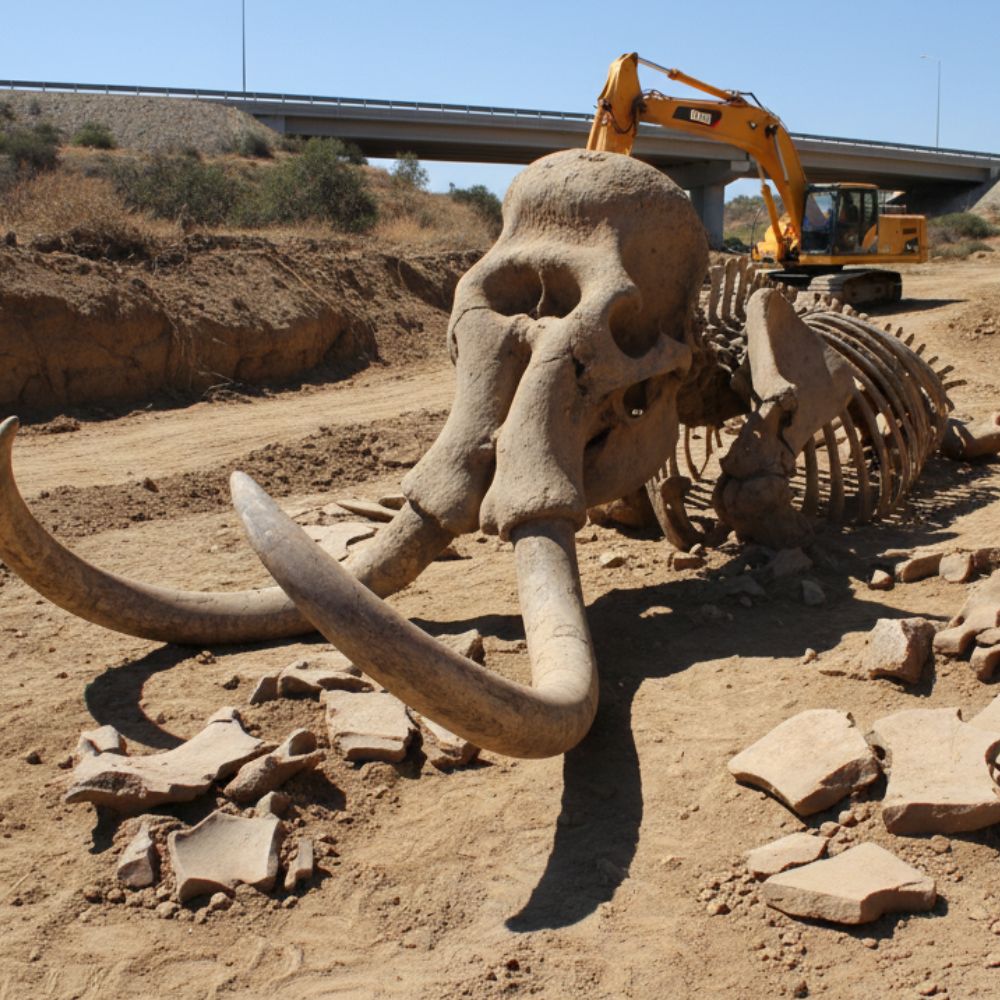Unearthing Giants: The Cerutti Mastodon Discovery

The relentless Californian sun beat down on the unassuming ravine, carving harsh shadows into the parched earth near San Diego. It was 1992, and construction crews were preparing a site for a new highway overpass when their machines scraped against something impossibly large. What began as a routine excavation quickly transformed into one of North America’s most enigmatic archaeological puzzles.
Dr. Richard Cerutti, a paleontologist from the San Diego Natural History Museum, arrived on site, his practiced eye immediately recognizing the colossal fragments emerging from the compacted sediment. It wasn’t just another find; this was something different. Layers of ancient earth, meticulously peeled back by dedicated excavators, revealed the scattered remains of a mastodon – an elephant-like creature that roamed the Ice Age landscapes. But what set the “Cerutti Mastodon” apart was not just its age, potentially far older than any previously accepted human presence in the Americas, but the compelling evidence surrounding its bones.
Amongst the fossilized ribs and vertebrae, alongside the massive tusks, lay fractured stones and hammer-like cobbles. These weren’t random geological formations; they bore the distinct marks of intentional breakage, the tell-tale signs of deliberate shattering by early hominins. This wasn’t merely a natural death; it suggested processing, perhaps butchery, by beings capable of using tools.
The initial dating of the site, which put the mastodon’s demise at an astonishing 130,000 years ago, sent shockwaves through the archaeological community. It challenged the long-held “Clovis First” paradigm, which suggested humans arrived in North America no earlier than 13,000 years ago. Could humans have been here ten times longer? The implications were monumental, potentially rewriting the entire timeline of human migration into the New World.
Debate raged. Critics questioned the dating methods, the interpretation of the fractured stones, and the very idea of such early hominins in California. Yet, the evidence remained, carefully documented and rigorously analyzed. The Cerutti Mastodon became a touchstone, a pivotal point of contention and fascination, forcing scientists to re-examine their assumptions about humanity’s ancient journey across continents.
The site, now carefully preserved and studied, continues to whisper its secrets. It stands as a testament to the power of unexpected discovery, reminding us that the Earth holds countless untold stories, waiting patiently beneath our feet to redefine what we thought we knew about our shared past. The Cerutti Mastodon remains an unyielding giant, not just in bone, but in its profound impact on the narrative of early human history.
